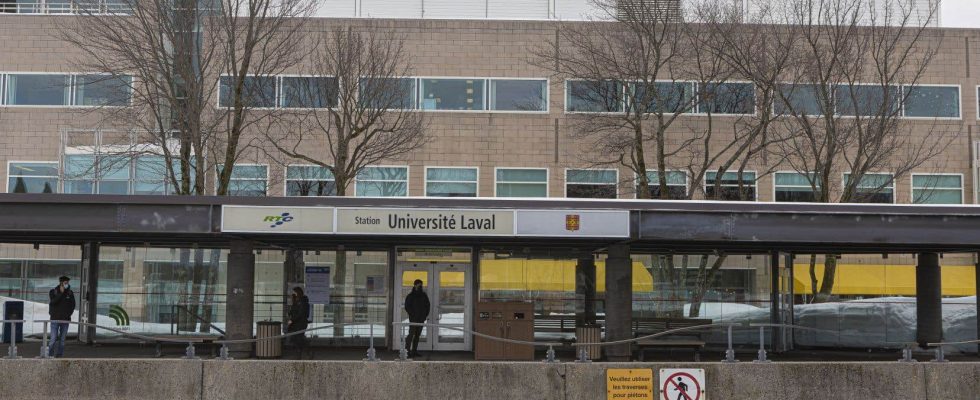Three weeks after the Quebec City tramway was put on hold by the CAQ government, Laval University still refuses to talk about it in the past tense. In a letter released on Wednesday, she asked for the work to resume “as quickly as possible”.
“It really is much more than rails! » says René Lacroix, the vice-rector for infrastructure and transformation. “For us, it has always been an opportunity to rethink the layout of the campus, to review all modes of travel, to promote intermodality and to plan the construction of pavilions in the parking lots to reduce our asphalt footprint. »
The tram was to build an exchange hub on the campus and reduce car traffic around the pavilions, in particular by providing better access for pedestrians and cyclists. Every day, according to the most recent Origin-Destination Survey published in 2017, more than 50,000 people travel daily to Laval University and its surrounding areas.
Among them, more than 60% used the car, and almost a quarter, or 28%, used public transport. In the eyes of René Lacroix, putting the tram on the side track deprives the community of sustainable mobility beneficial to “thousands of students, faculty members and staff members of all higher education establishments in the region. region. »
Laval University, with nearly 56,000 students in 2022-2023, employs more than 10,000 people full and part time. Despite this traffic, it is “one, if not the only university of its size in Canada, which does not benefit from a structuring transport network,” deplores rector Sophie D’Amours.
“When young people learn to use public transportation, the chances that they will continue this use in the longer term are very great,” she believes. It is essential for Laval University to have this infrastructure as soon as possible and we intend to explain it to the new project leaders. »
On November 8, the CAQ withdrew the tramway file from the hands of Quebec City to entrust CDPQ Infra with the mandate to determine the best structuring transportation network for the greater capital region. The vice-rector, René Lacroix, says he is “very worried” about the questioning of a choice “rooted in the science of travel”.
“Laval University has been working for five years with the City Project Office and the RTC in a rigorous, serious, diligent manner, to ensure that we are capable of delivering,” he says. We are making an investment of this nature for several decades, we must plan ahead. It’s a great project for our society, for the university, I think it’s a shame that we’re going backwards. »
Since its accession to power, the CAQ government’s detours in terms of mobility in the Quebec region have caused much ink to be spilled, but led to few results. The third link, the first shovelful of which was to take place within a first mandate, seems to have returned to square one since the defeat of the CAQ troops during Jean-Talon’s partial election.
The government also put the tramway on ice after seeing the bill climb to $8.4 billion, more than double the initial estimate of $3.3 billion. The City has committed more than half a billion public dollars in works and studies to date. A few years before forcing a pause in construction, the CAQ had diverted the original route towards D’Estimauville, then had raised loud cries about 500 m of shared street in an area crossed by the tramway.
“The situation,” concludes the vice-rector of Laval University, “also sends a strange message to the student community” which had campaigned for, then obtained in 2020, the university pass (LPU), a valid unlimited transport ticket for the entire session and at a fraction of the usual price.
The commissioning of the LPU sparked real enthusiasm: more than 1.7 million trips and a 21% reduction in requests for parking permits on campus.
The tram would have made it possible to continue this momentum with its capacity to “transport a large number of people per hour”, believes the vice-rector. “If we want to do the equivalent with buses, they will line up non-stop morning and evening on campus,” insists René Lacroix. And then we’re going to generate more traffic than we currently have. »
